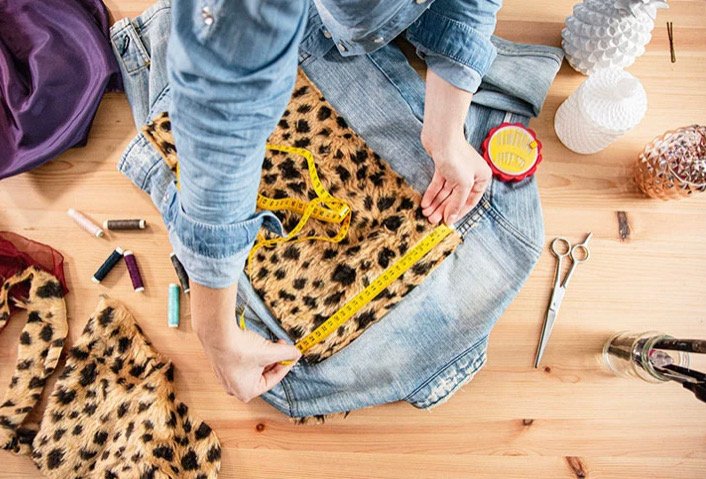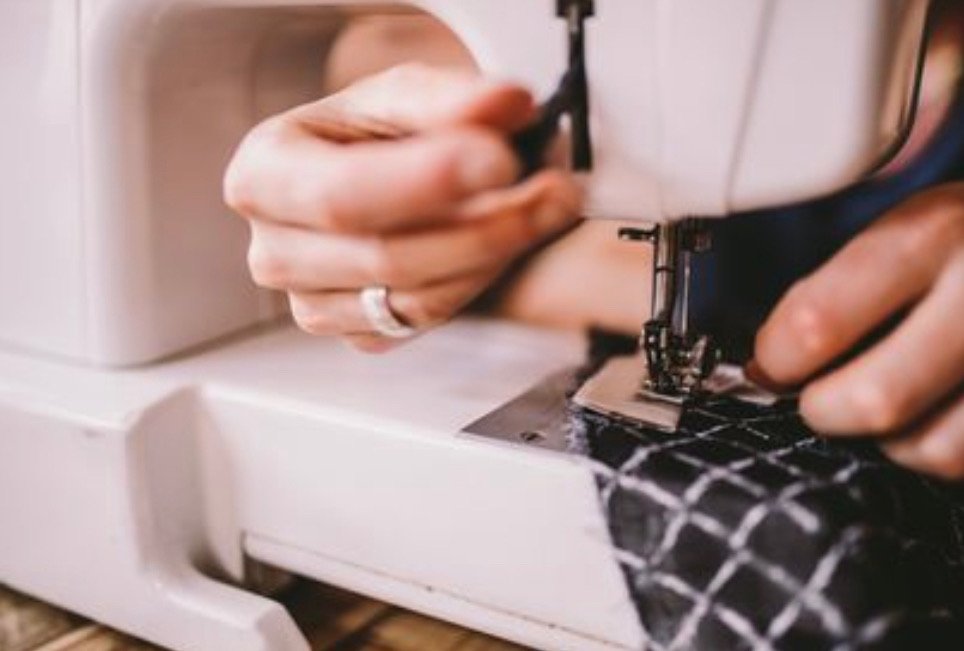TFW Youth Contributor Series: A Quick Guide To Upcycling
By Alisha Durbhakula
Did you know that the textile industry is the world’s 5th largest carbon dioxide (CO2) contributor? If you’ve heard about the polar ice caps melting in the North Pole, you’re probably aware that it’s because of C02. 20 percent of the earth’s water pollution can also be traced back to the textile industry. The production of nearly 80 billion new pieces of clothing annually is causing a devastating impact on our environment.
So what can we do about this? Well, the truth is, the majority of us continue to buy from large clothing franchises that contribute to these problems, as most of us don’t know how to sustainably shop. In effect, we are increasing the amount of C02 in our atmosphere, and we are contributing to the depletion and contamination of our own water sources.
Many so-called “fast fashion” companies have polluted our once thriving Chinese, Bangladeshi, and Indian rivers, filling them with cancer-causing chemicals. One of the UN’s sustainable development goals is “Responsible Consumption and Production.” In fact, there are 17 Sustainable Development Goals that the UN has promised to put in place by 2030, all aimed at ensuring a healthier environment for everyone to enjoy.
Along with these global efforts, we need to decrease the amount we spend at big franchises and increase our spending in the secondhand market.
Fortunately, spending in secondhand markets has increased substantially. Thrifting has grown 21 times faster than the retail apparel market over the past three years. In fact, the U.S. secondhand clothing market is projected to more than triple in value in the next 10 years. There are some incredible companies leading the way. For example, Rent the Runway is the largest shared closet in the world, allowing women to rent high-end clothes for a cheaper price all while decreasing their carbon footprint.
Extending the use of secondhand markets can help create a sustainable environment by decreasing water pollution and carbon emissions. Some questions remain, however. At the top of the list is this one: If big clothing franchises are so bad, why are we still buying from them?
The simple answer is that although thrift stores are not as harmful to our planet, we still feel hesitant to buy from them as we worry that items in the stores won’t be appealing. Additionally, thrift stores have begun to mark up prices due to neighborhood income, so many people find it challenging to buy from them.
With all of this information in mind, you may be questioning what we can do to sustainably wear fashionable clothing. The answer is…upcycling! Sharmon Lebby, an ethical fashion advocate, defines upcycling as “creating something new from discarded materials by repairing, refurbishing, or repurposing them.”
There are plenty of ways to make this happen. For instance, I recently learned that a simple task, like wearing a cotton shirt frequently, results in saving 75 percent of fresh water used for dyeing and processing the clothing. Sonali Diddi, a design researcher at Colorado State University, led a study that concluded that extending the average life of clothes by just three months of use would lead to a 5 to 10 percent reduction in each item’s carbon, water, and waste footprints.
The Nordic Council of Ministers found that the recycling of textiles from Nordic countries saves the equivalent of 425 million pounds of CO2 annually, along with 19 billion gallons of water.
This means that simply reusing clothes that are sitting in the back of our closets can directly affect the air we breathe and slow the impact of climate change!
TFW Youth contributor spotlight
Meet TFW Youth Contributor, Alisha Durbhakula,13, from Maryland. From a young age, Alisha has been interested in the environment and how to prevent the further increase of climate change. She is actively involved in advocating for better food and nutrition for school-aged kids and is currently working on a vegan cookbook.
Alisha tells TFW that she “really enjoyed writing this article on how upcycling contributes to the environment.”
This article was made possible by our founding partner Ms. Media. We’d like to thank the founders and staff of this incredible organization for empowering women and sharing this important knowledge with our audience! For more information on how to help power The Fem Word, email us info@msmediatv.com
The views, thoughts, and opinions expressed in this article belong solely to the author, and do not necessarily reflect the position of The Fem Word organization. Any content provided by our authors are based on their opinions and are not intended to malign any religion, ethnic group, club, organization, company, individual, or anyone or anything.


